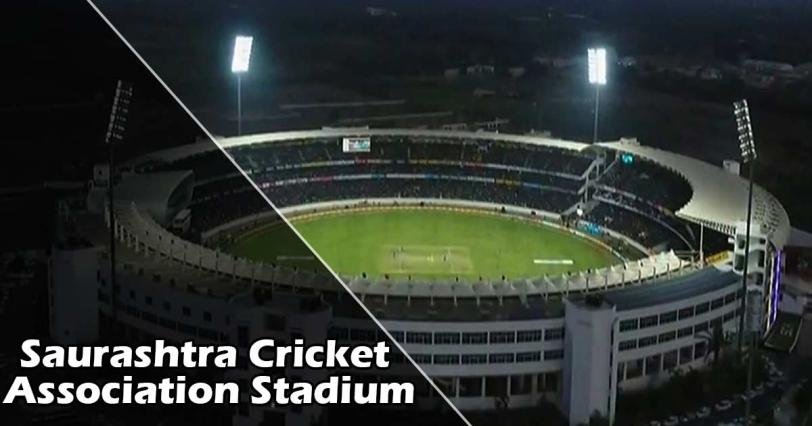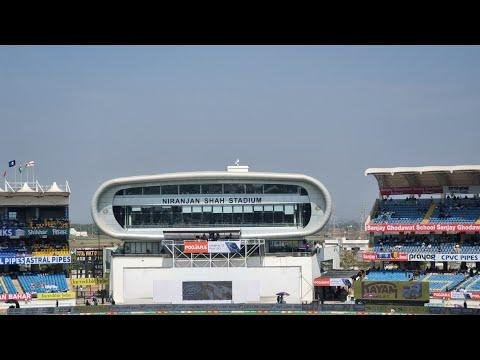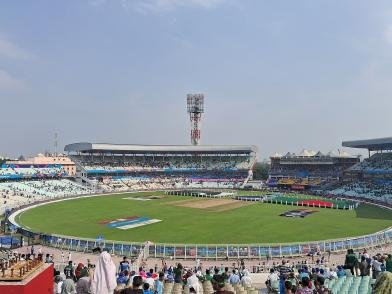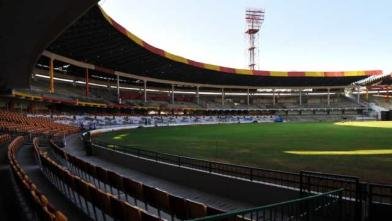❤️ A Cricketing Jewel of Gujarat
Nestled in the heart of Saurashtra, the Niranjan Shah Stadium, formerly known as the Saurashtra Cricket Association Stadium, is a vibrant testament to Gujarat’s cricketing passion. Set along the scenic Jamnagar-Rajkot Highway, this modern venue is celebrated for its batsman-friendly pitch, electrifying IPL clashes, and historic Test matches. With its sustainable design and roaring crowds, the stadium is more than a venue—it’s a celebration of cricket’s enduring legacy in India. Dive into its rich history, unique features, and unforgettable moments below.
History of the Stadium
Inaugurated in 2009, the Niranjan Shah Stadium was built to establish a world-class cricketing facility in Saurashtra, Gujarat. Constructed on a 40-acre site along the Jamnagar-Rajkot Highway, it replaced the aging Madhavrao Scindia Cricket Ground, Rajkot’s primary venue since 1935. The stadium aimed to elevate the region’s cricketing profile and host international matches. In February 2024, it was renamed to honor Niranjan Shah, a former first-class cricketer and long-serving honorary secretary of the Saurashtra Cricket Association. Key milestones include its first international match, an ODI between India and England in 2013, and its debut Test in 2016 against England, marking its rise as a premier venue.
Location and Accessibility
Located at Khandheri, Jamnagar-Rajkot Highway, Rajkot, Gujarat, India (Coordinates: 22.3600° N, 70.6900° E), the stadium is 10 km from Rajkot’s city center, ensuring easy access. Fans can reach it in 20–30 minutes by taxi (₹200–₹300) or auto-rickshaw (₹100–₹150) from Rajkot Junction (12 km) or Rajkot International Airport (15 km). Local buses from Rajkot’s central bus stand (10 km) are budget-friendly. Nearby landmarks like Race Course Grounds (8 km) and Saurashtra University (7 km) add convenience, with hotels and eateries along the highway catering to visitors. Match-day traffic may require early planning.
Architecture and Design
With a seating capacity of 28,000 (expandable to 40,000), the Niranjan Shah Stadium offers unobstructed views from every seat. Its modern design, featuring a Lord’s-inspired media box, blends cricketing heritage with contemporary aesthetics. The main field spans 90 meters, with a 70-meter secondary ground, and boundaries range from 61–67 meters, favoring high-scoring games. The batsman-friendly pitch provides true bounce and pace, though spinners gain turn in Test matches’ later stages. Part of a multi-sport complex, the stadium’s solar-powered system, generating 82,000 units annually, makes it Gujarat’s first eco-friendly cricket venue.
Famous Matches and Events
The stadium has hosted thrilling matches across formats, including ODIs, T20Is, Tests, and IPL games. Iconic moments include the 2013 ODI (India vs. England), where England won by 9 runs, and the 2013 T20I (India vs. Australia), with Yuvraj Singh’s unbeaten 77 securing a 6-wicket victory. The 2016 Test against England marked its Test debut, while the 2018 Test saw India post 649/9d against West Indies, with centuries from Virat Kohli (139), Prithvi Shaw (134), and Ravindra Jadeja (100*). It hosted 10 IPL matches for Gujarat Lions (2016–17), with Royal Challengers Bengaluru scoring 213/2 in 2017. Local sports tournaments are occasionally held, but cricket remains the focus.
Records:
- Highest Test total: 649/9d by India vs. West Indies (2018).
- Highest individual Test score: 139 by Virat Kohli (2018).
- Best Test bowling figures: 5/57 by Kuldeep Yadav (2018).
- Lowest T20I total: 87 by South Africa vs. India (2015).
Facilities
For Spectators:
- Comfortable seating across three stands with excellent field views.
- Food outlets offering snacks to meals, though prices (₹100–₹200) are often high.
- Parking for thousands of vehicles, with congestion during major matches.
- Clean restrooms, drinking water, and high-definition replay screens.
- Accessibility features like ramps for differently-abled fans.
For Players:
- Spacious dressing rooms with cushioned seats.
- Indoor nets, gymnasium, and two grounds (90m and 70m) for practice.
- Medical and physiotherapy support for players.
For Media:
- Lord’s-inspired media box with high-speed Wi-Fi.
- Over 60 hospitality boxes for VIPs during international matches.
Unique Features
The stadium’s solar-powered infrastructure, generating 82,000 units annually, makes it India’s second eco-friendly cricket venue. Its Lord’s-inspired media box adds architectural distinction, while fan zones with giant screens, music, and cheerleaders create a festive IPL atmosphere. Advanced floodlights ensure clear visibility for night matches, and the multi-sport complex includes facilities for badminton, basketball, and volleyball. Plans for a cricket academy highlight its commitment to nurturing talent, enhancing its legacy.
Fan Experience
The Niranjan Shah Stadium is a cauldron of cricketing passion, with fans raving about its electric atmosphere, especially during IPL matches. The Saurashtra crowd’s energy peaks when local stars like Cheteshwar Pujara or Ravindra Jadeja shine. Social media posts on X highlight the “brilliant vibe” of music and cheers, with one fan calling it “a cricketing carnival.” Reviews praise spacious seating and clear sightlines but note parking and food price challenges. A TripAdvisor user described it as “a vibrant gem with unmatched energy,” making it a cherished destination for cricket lovers.









